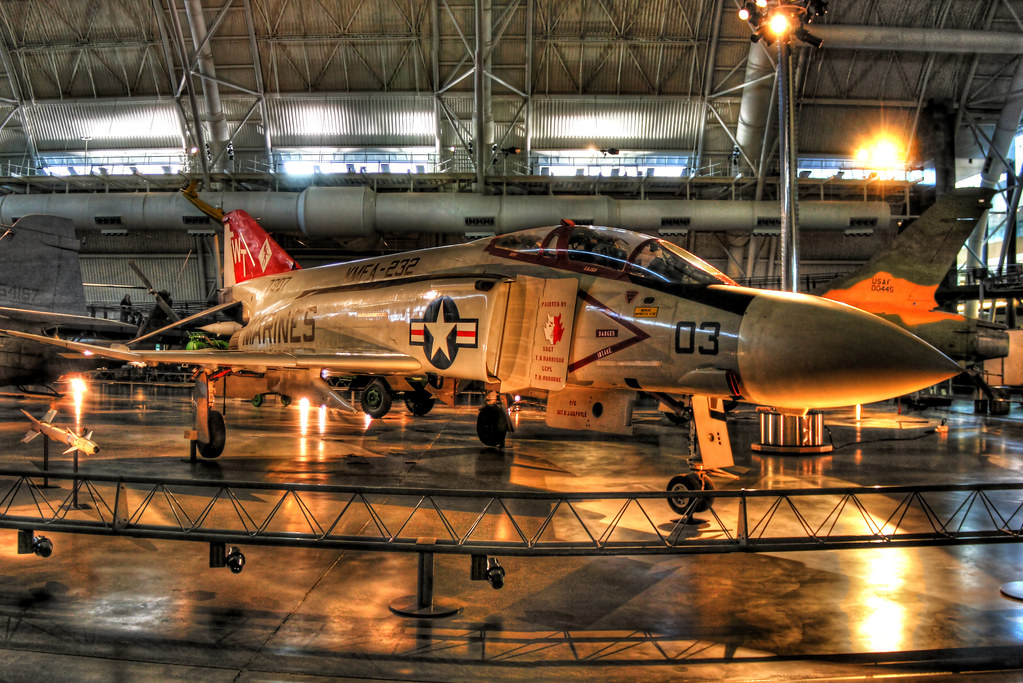
Since its start in 1958, the F-4 Phantom II showcased American engineering and military power.
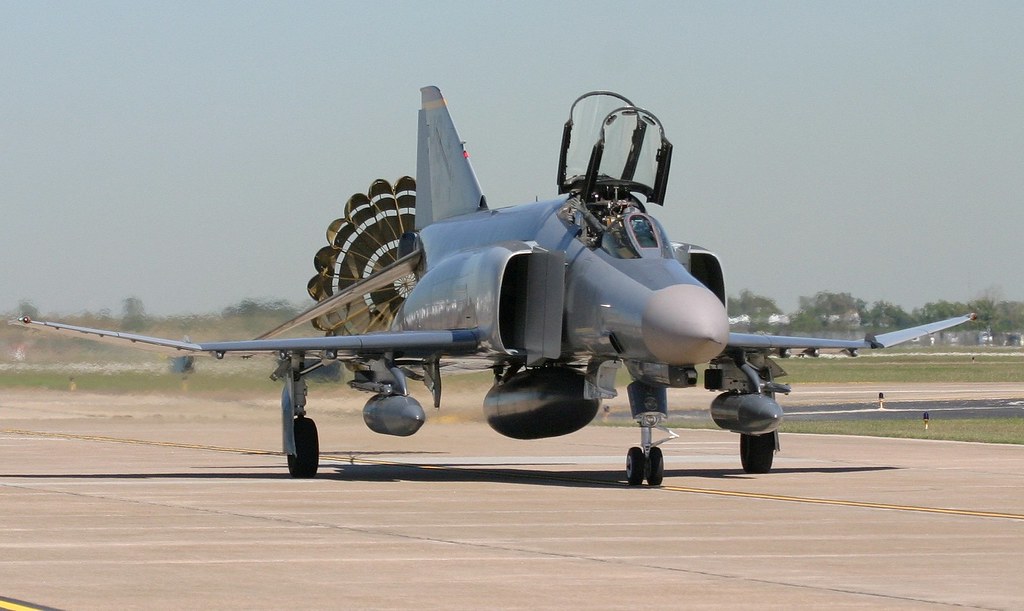
Created by McDonnell Aircraft Co. for the U.S. Navy, the Phantom II wasn’t just a fighter jet—it represented an aerial revolution, a versatile plane that transformed air combat through its advanced missile tech and long-range abilities.
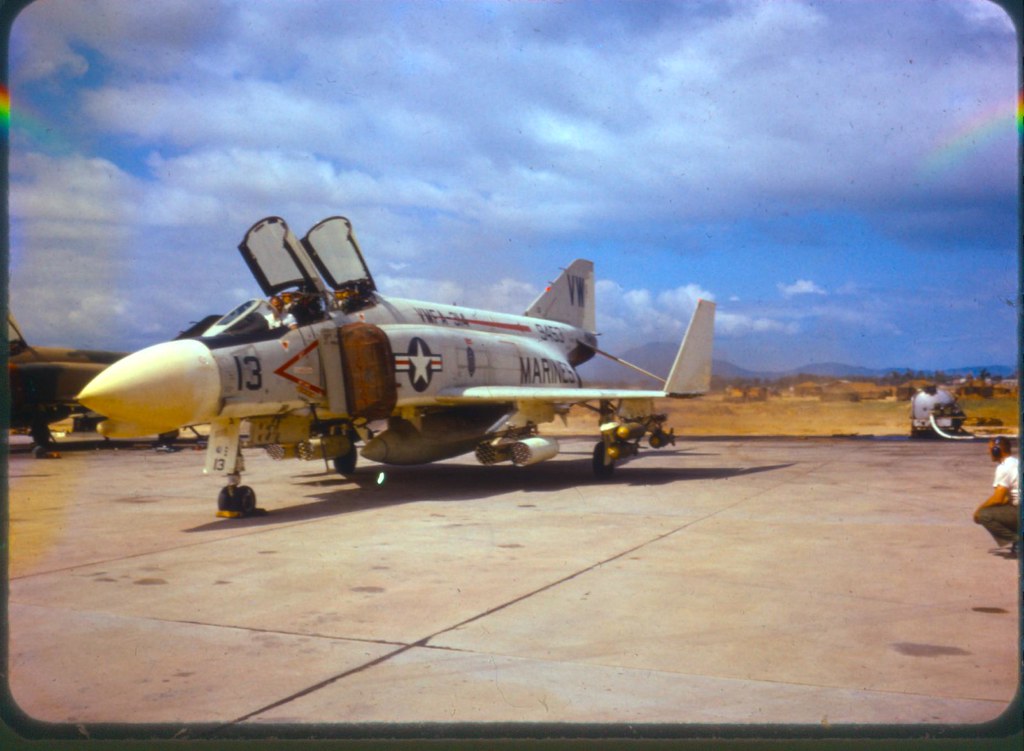
The F-4 Phantom II, capable of all-weather operations, performed with excellence across three tactical air roles: air superiority, interdiction, and close-air support.
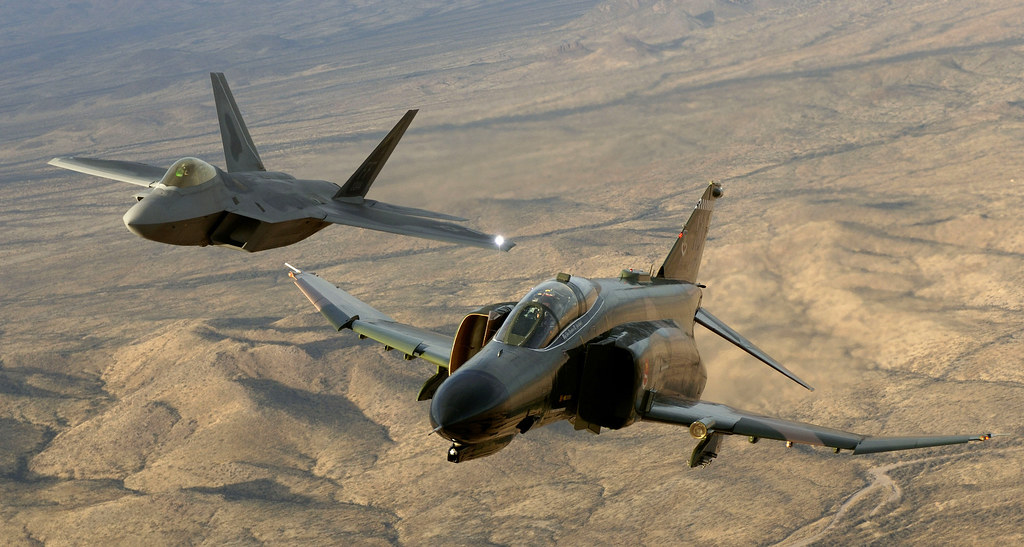
In its air-to-ground role, the F-4 Phantom II had the capability to carry double the normal load of a B-17 bomber from World War II. It could be equipped with weapons and/or external tanks on nine external store stations.
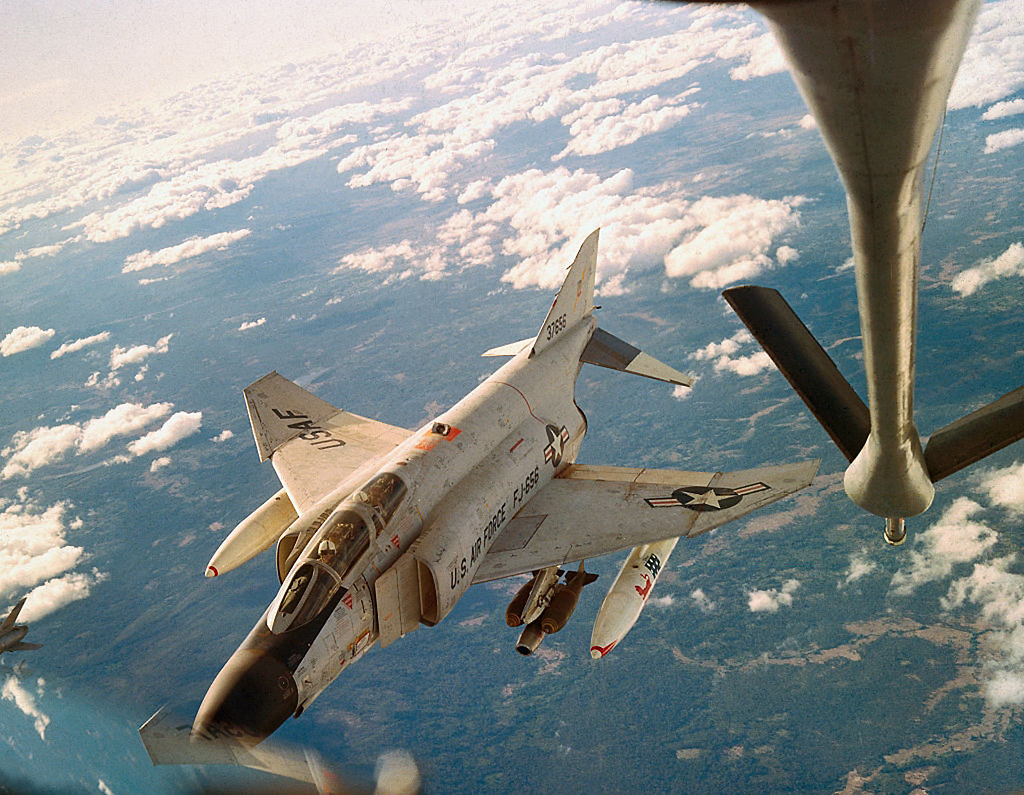
A common configuration for an F-4C in 1967 included four AIM-7E and four AIM-9B air-to-air missiles, along with eight 750-pound Mk 117 bombs.
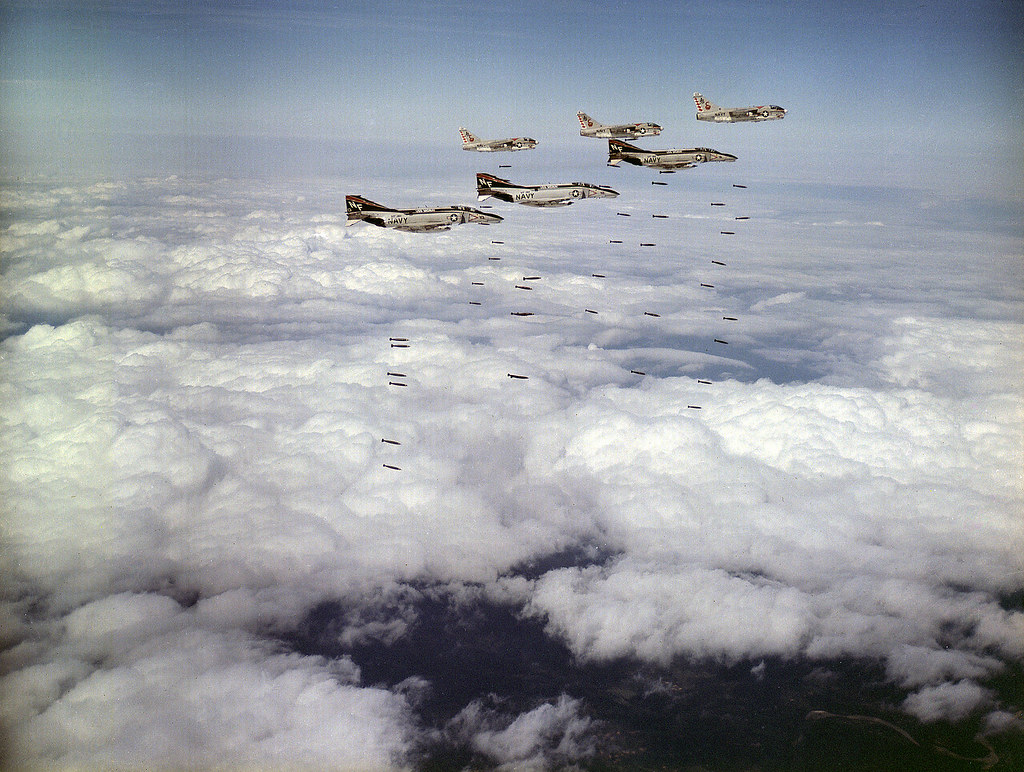
The aircraft also had two external fuel tanks on the outboard pylons and an ALQ-87 electronic countermeasures (ECM) pod on the right inboard pylon.
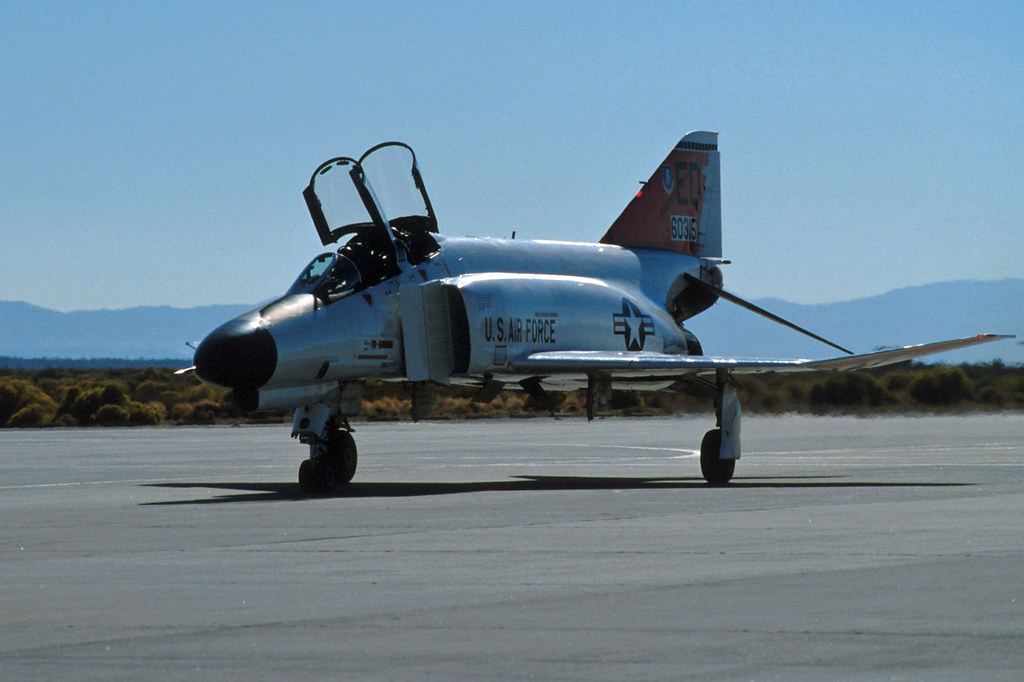
The F-4E model was also equipped with an internally mounted 20mm multibarrel gun featuring an improved fire-control system.
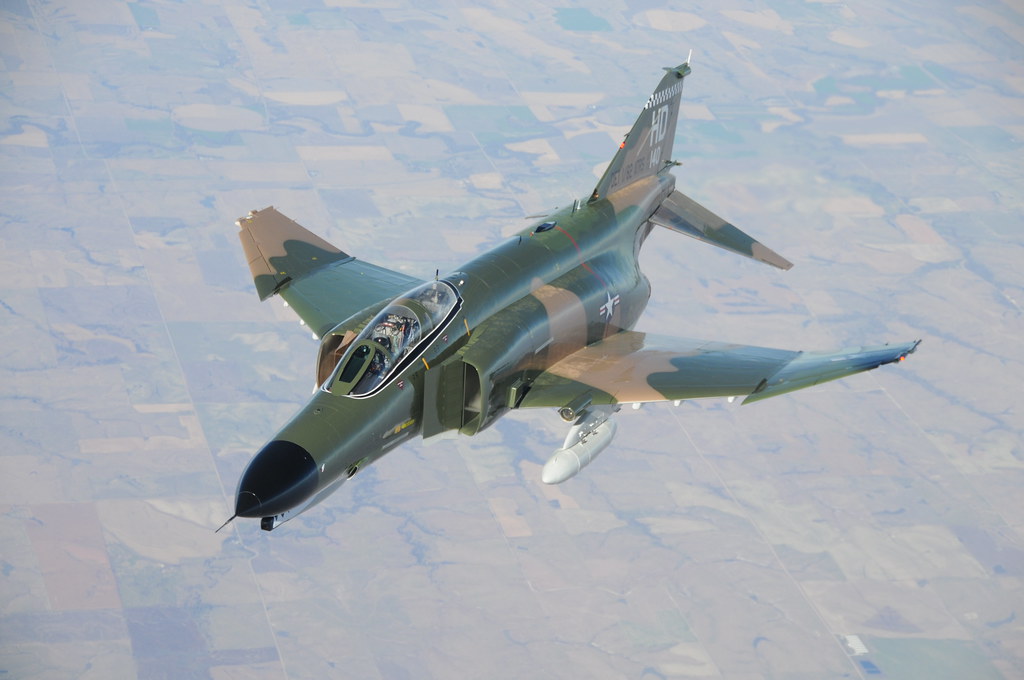
The genesis of the Phantom II was marked by a series of trials and improvements, resulting in a twin-engine, supersonic fighter that the U.S. Navy couldn’t overlook.
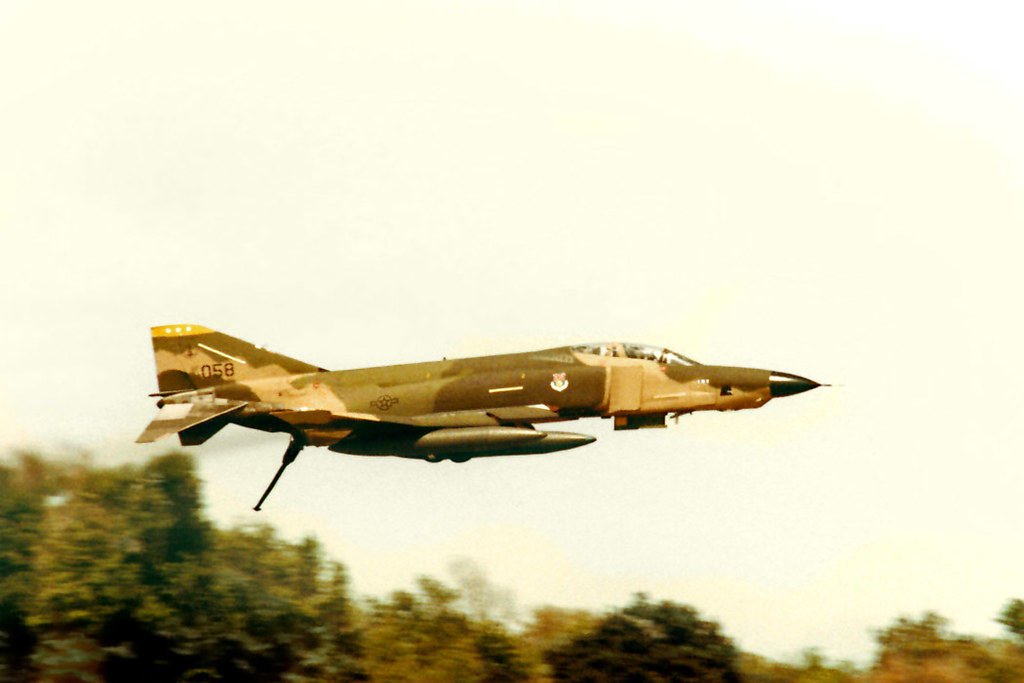
Production spanned over two decades, from the late 1950s to 1979, with more than 5,000 units built, indicating the significant demand for this aircraft.

Despite its large size and weight, the F-4’s two General Electric J-79-GE-15 engines endowed it with a top speed of 1,400 mph, capable of climbing to heights above 60,000 feet and reaching a range of 1,750 miles.
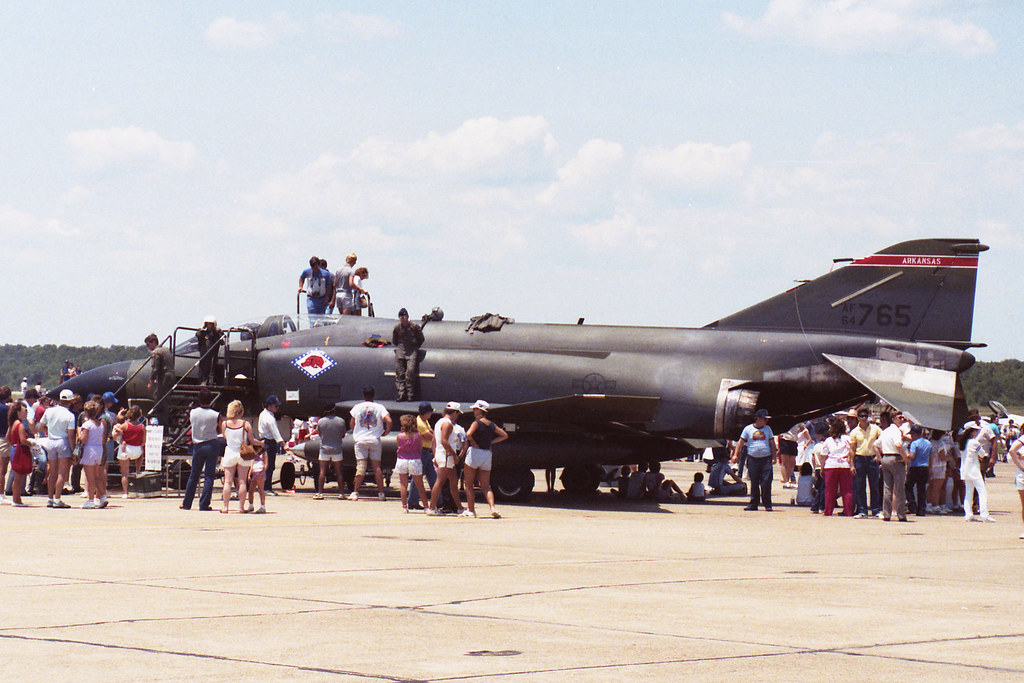
In 1965, the Air Force deployed its initial F-4Cs to Southeast Asia, engaging in air-to-air combat against North Vietnamese aircraft and conducting ground attack missions.

Throughout the conflict, the different versions of the F-4 achieved over 100 victories against MiG aircraft in Vietnam.
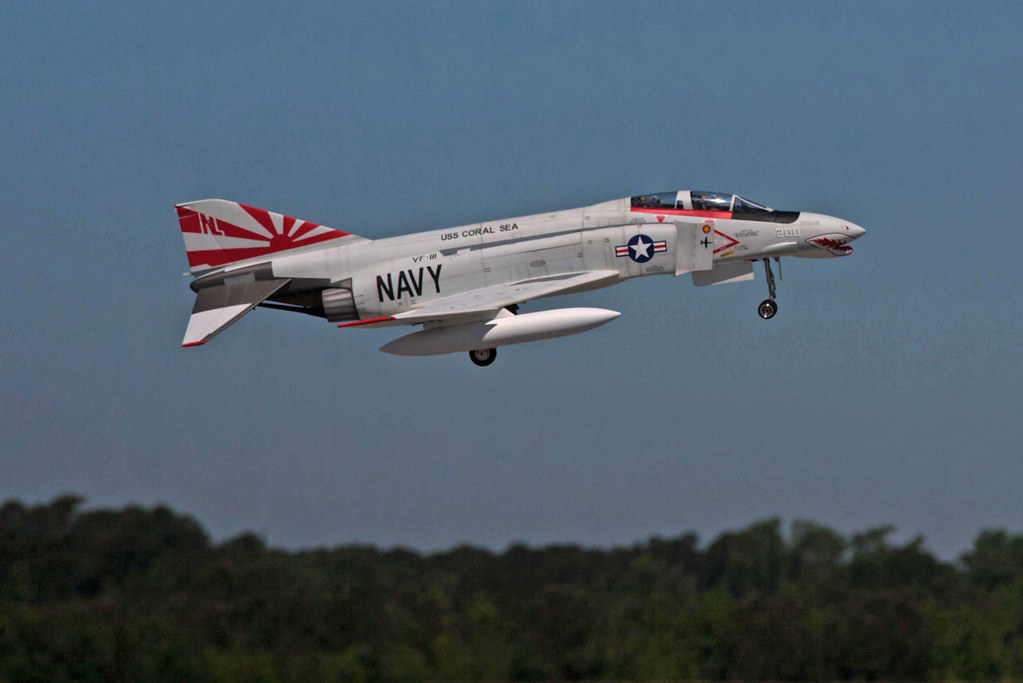
The Phantom’s adaptability was further proven by its concurrent service in the U.S. Navy, Air Force, and Marine Corps. Its service extended into the Gulf War, showcasing its utility across decades of changing warfare.

However, the end of its operational days does not spell the end of the Phantom’s flight time. The F-4 Phantom was slowly retired from the U.S. Air Force, Navy, and Marine Corps, being succeeded by the F-14 Tomcat, F/A-18 Hornet, F-15 Eagle, and F-16 Fighting Falcon.
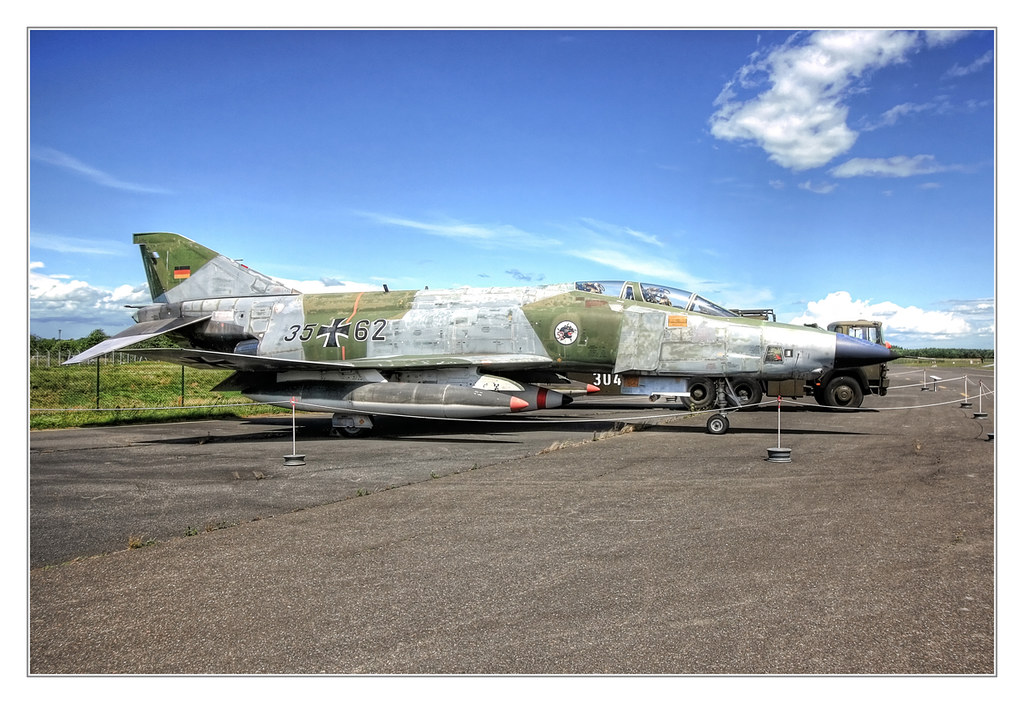
The final F-4 aircraft were phased out of U.S. service by 1996, although a few continued to operate until 2016 as QF-4 unmanned target drones.Yet the legacy of the F-4 Phantom II endures—a testament to its incredible design, versatility, and the pivotal role it played in modernizing aerial combat.
Relevant articles:
– F-4 PHANTOM II, af.mil
– The F-4 Phantom II: The Versatile Workhorse of Military Aviation, avi-8.com
– The F-4 Phantom II: The most prolific jet fighter in American history?, Imperial War Museums
– Like a Ghost, the Iconic F-4 Phantom is Slowly Fading Away, popularmechanics.com

